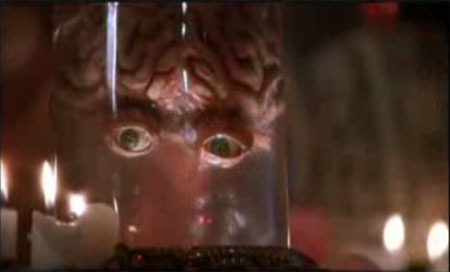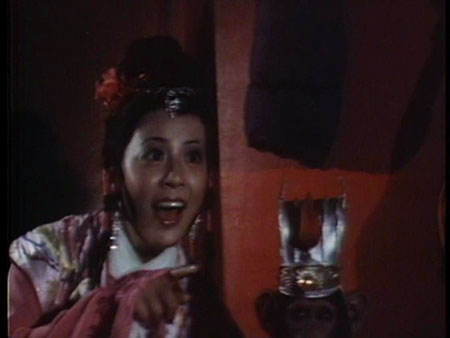“I mean, I don’t know how to describe it. But I just did. It’s just an insane f***in’ movie with insane parts. You’re watching it, it gives these curves that you didn’t see coming, until probably I just told you and showed you in the review. But it’s just I don’t even know how else to review it, you know, the, it’s just insane. It’s an insane f****in’ movie. Uncle Bill, you’re insane for liking it, and I’m insane for liking it too. It’s just insanity incarnate. But it’s a lot of fun.”–youtube fan review of Blood Diner

DIRECTED BY: Jackie Kong
FEATURING: Rick Burks, Carl Crew
PLOT: At the direction of their uncle Anwar, a talking brain in a jar, two restaurateur brothers assemble a vessel composed of body parts harvested from immoral women to receive the spirit of the ancient Egyptian goddess Sheetar. They are opposed by a pair of mismatched cops and the owner of a rival vegetarian restaurant intent on stealing their secret recipe. After many bloody murders, they must complete only the last ritual, a “Lumerian feast” where Sheetar will take the life of a virgin, along with the attendees at the banquet.

BACKGROUND:
- Blood Diner was originally intended to be a sequel to Herschell Gordon Lewis’ transcendently bad Blood Feast (1963), but when the collaborators could not agree on a scenario the project was changed to a black comedy tribute in the spirit of Lewis’ movie.
- Blood Diner was originally banned in some Canadian provinces and in Iceland, and was heavily cut for release in other countries.
INDELIBLE IMAGE: As drug-zombies rave and cultists in Egyptian dress attempt to channel the goddess into a stitched-together corpse, a punk band (composed of a singer in a Roman helmet, two backup singers in blue wigs, four sidemen dressed as Hitler and a pantomime horse roaming the stage) plays in the background.
WHAT MAKES IT WEIRD: Most movies featuring talking brains in a jar are weird, and Blood Diner is no exception.
Original trailer for Blood Diner
COMMENTS: There was little in female exploitation director Jackie Kong’s brief oeuvre to Continue reading 14. BLOOD DINER (1987)


